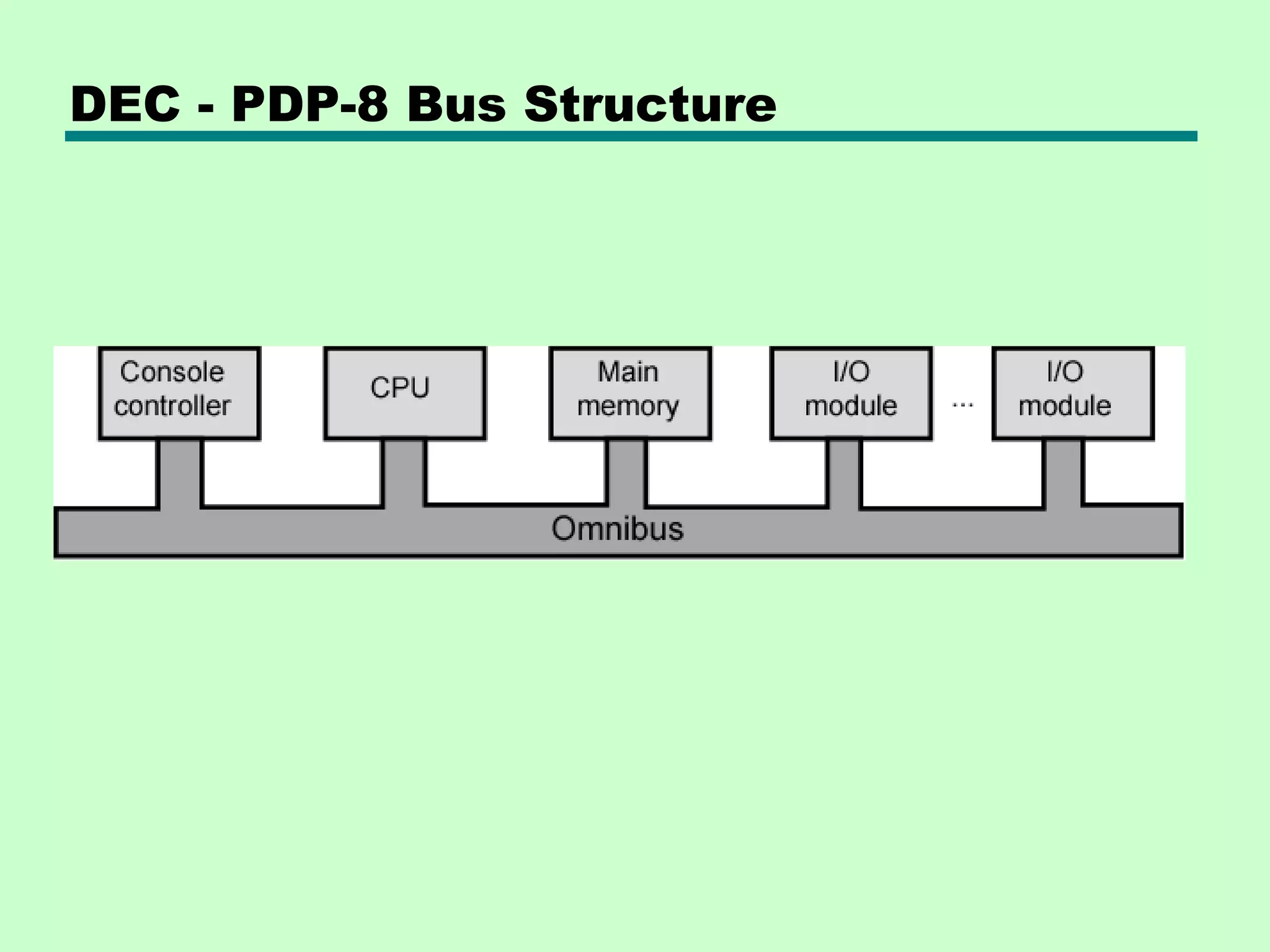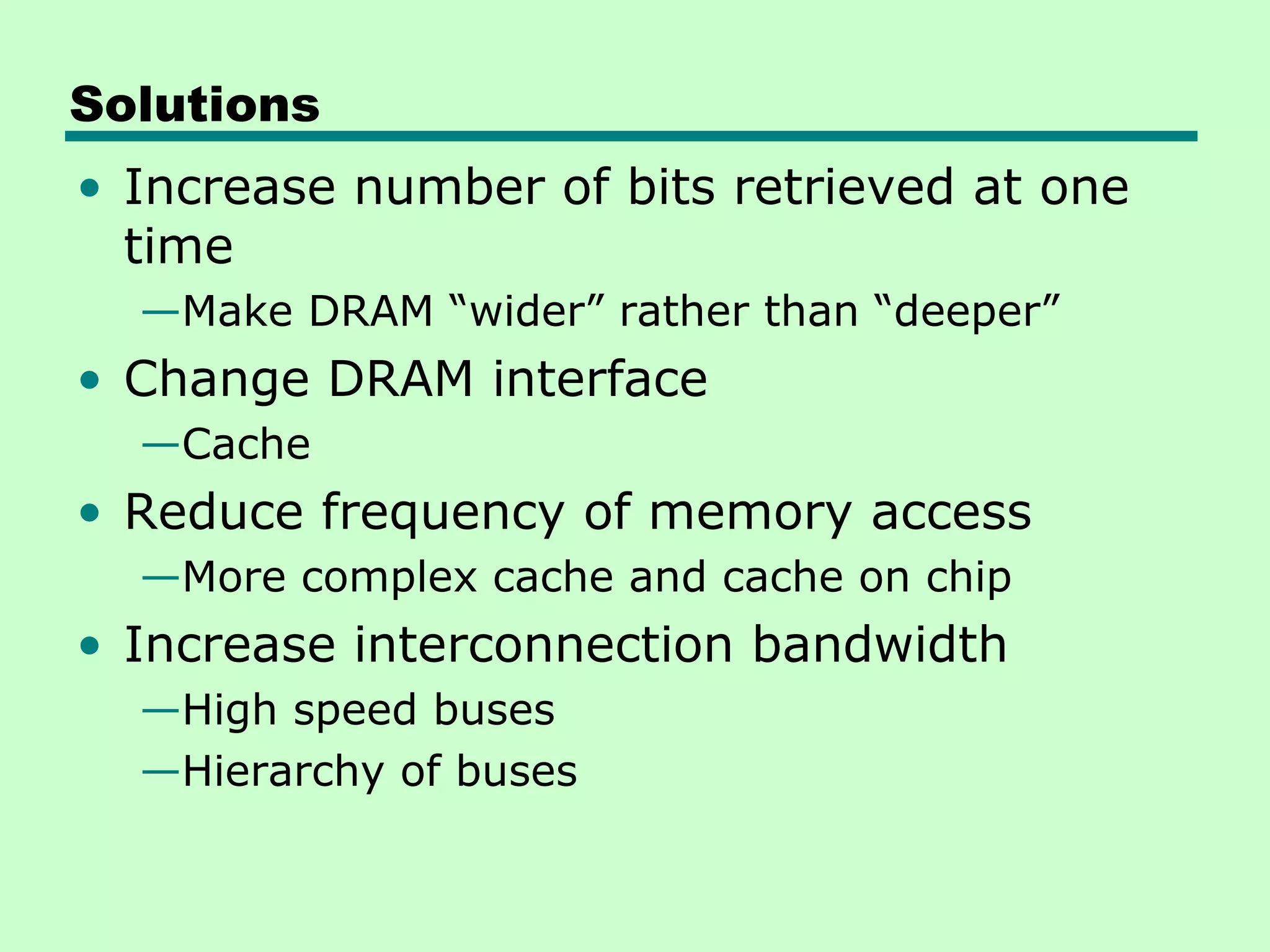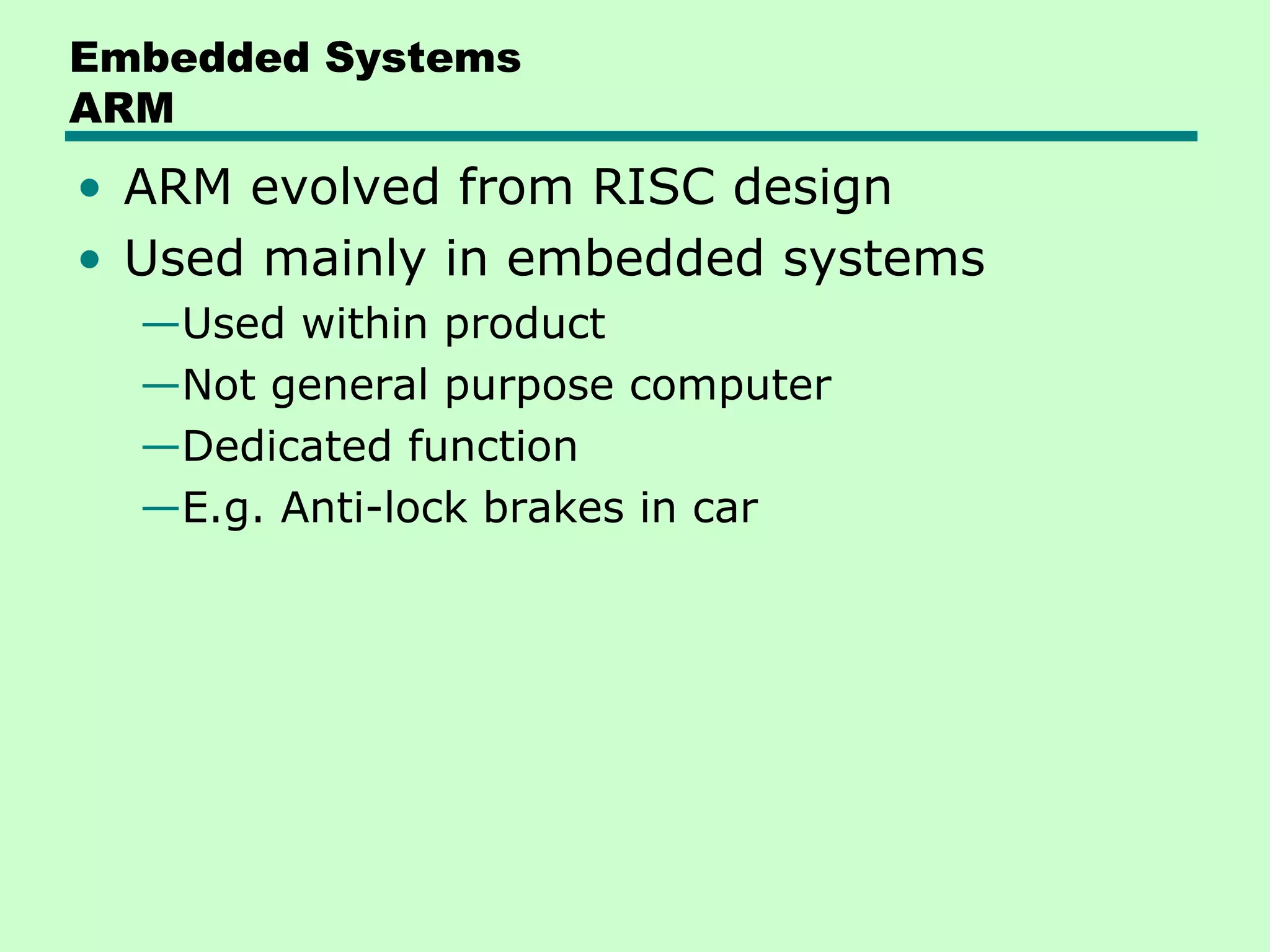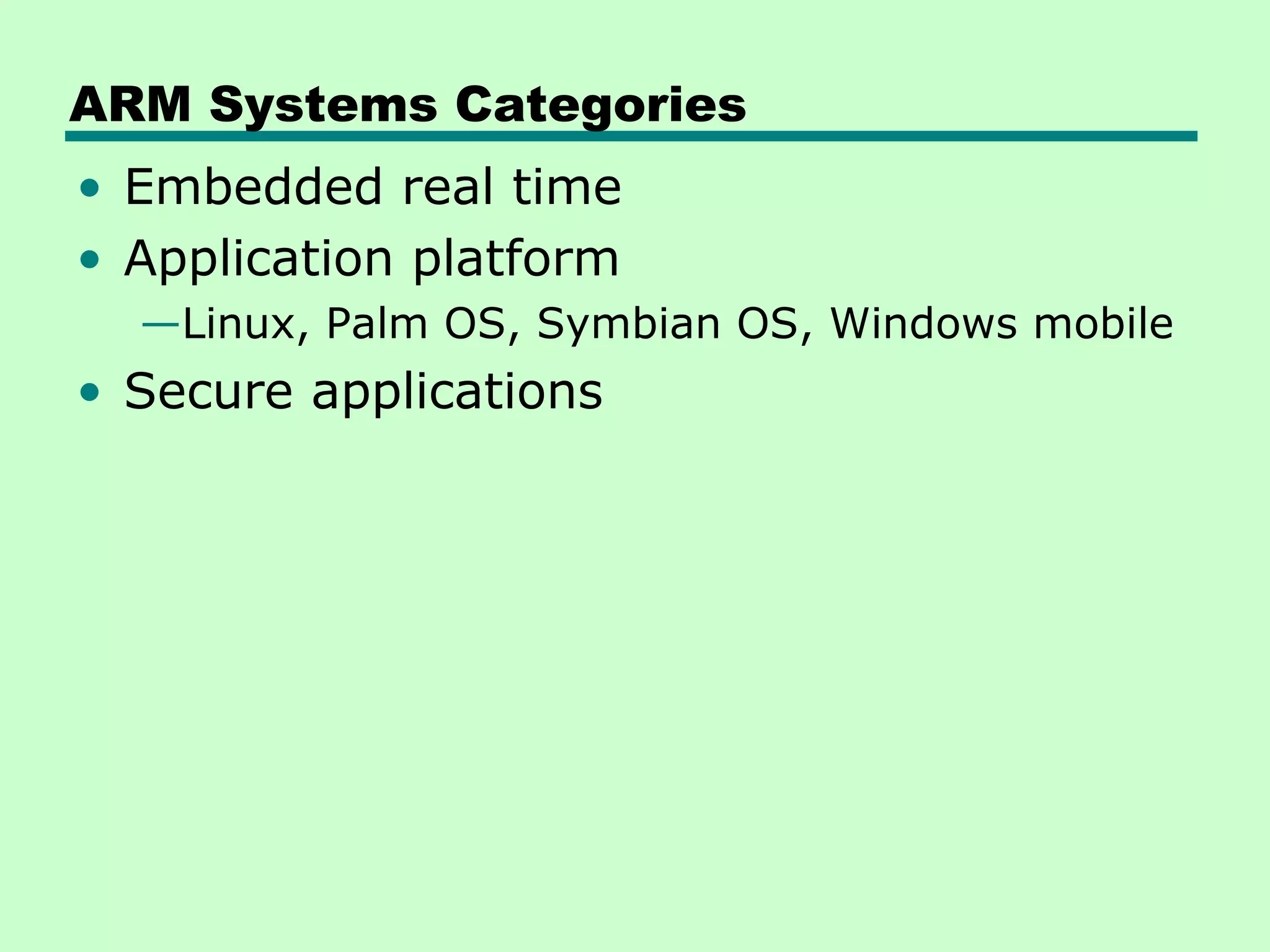This chapter discusses the evolution of computers from the ENIAC in the 1940s to modern multi-core processors. It covers key developments like the stored program concept, transistors replacing vacuum tubes, integrated circuits, and Moore's Law. Performance improvements involved caching, pipelining, parallelism and balancing processor and memory speeds. Embedded systems also evolved, with ARM processors widely used in devices. Benchmarks and Amdahl's Law address limits of parallel processing.
















































![Amdahl’s Law
• Gene Amdahl [AMDA67]
• Potential speed up of program using
multiple processors
• Concluded that:
—Code needs to be parallelizable
—Speed up is bound, giving diminishing returns
for more processors
• Task dependent
—Servers gain by maintaining multiple
connections on multiple processors
—Databases can be split into parallel tasks](https://image.slidesharecdn.com/02computerevolutionandperformance-130103104200-phpapp02/75/02-computer-evolution-and-performance-49-2048.jpg)


